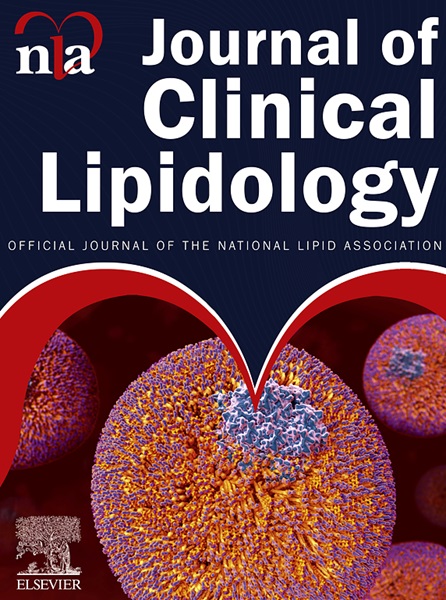脂蛋白(a)的下一步是什么?全国血脂协会专家小组讨论报告
IF 3.6
3区 医学
Q2 PHARMACOLOGY & PHARMACY
引用次数: 0
摘要
在脂蛋白(a)(Lp(a))领域,这是一个激动人心的时刻。人们对这种重要的脂蛋白和强效心血管风险标志物的关注正在从专科医生向全科医生过渡。在临床上,它作为一种重要的检测方法正日益受到重视。有证据表明,脂蛋白(a)是动脉粥样血栓性疾病、主动脉瓣狭窄和儿童缺血性中风的病理因素之一。目前正在进行三项大型的第三阶段随机心血管结果试验,在这些试验中,通过 mRNA 引导的疗法在二级预防中特异性地大幅降低脂蛋白(a),最早将于 2025 年开始报告结果。无论结果如何,有关脂蛋白(a)的问题仍有许多未解之谜,从脂蛋白(a)生物学的基本未知到其测量的复杂性、最佳筛查策略,以及患有或未患有明显心血管疾病的高脂蛋白(a)水平个体的临床管理,不一而足。因此,美国国家血脂协会(NLA)召集了一次由临床医生和基础研究人员参加的专家讨论会,以确定我们对脂蛋白(a)生物学和致病性认识的知识差距,并讨论在不同临床环境下管理脂蛋白(a)升高的方法。(183字)本文章由计算机程序翻译,如有差异,请以英文原文为准。
What's next for lipoprotein(a)? A national lipid association report from an expert panel discussion
This is an exciting time in the lipoprotein(a) (Lp(a)) field. Attention to this important lipoprotein and potent cardiovascular risk marker is transitioning from the purview of the specialist to that of the general practitioner. Its clinical adoption as an important test is increasing in momentum. There is evidence that Lp(a) contributes to the pathology of atherothrombotic disease, aortic valve stenosis, and childhood ischemic strokes. Three large, Phase 3, randomized, cardiovascular outcomes trials in which Lp(a) is specifically and substantially lowered by mRNA-directed therapies in secondary prevention settings are in progress and will start to report results as early as 2025. Regardless of outcomes, there remain many unanswered questions about Lp(a), ranging from fundamental unknowns about Lp(a) biology, to the complexity of its measurement, optimal screening strategies, and clinical management in individuals with high Lp(a) levels both with and without overt cardiovascular disease. Accordingly, The National Lipid Association (NLA) convened an Expert Discussion involving clinicians and fundamental researchers to identify knowledge gaps in our understanding of Lp(a) biology and pathogenicity and to discuss approaches in the management of elevated Lp(a) in different clinical settings. (183 words)
求助全文
通过发布文献求助,成功后即可免费获取论文全文。
去求助
来源期刊
CiteScore
7.00
自引率
6.80%
发文量
209
审稿时长
49 days
期刊介绍:
Because the scope of clinical lipidology is broad, the topics addressed by the Journal are equally diverse. Typical articles explore lipidology as it is practiced in the treatment setting, recent developments in pharmacological research, reports of treatment and trials, case studies, the impact of lifestyle modification, and similar academic material of interest to the practitioner. While preference is given to material of immediate practical concern, the science that underpins lipidology is forwarded by expert contributors so that evidence-based approaches to reducing cardiovascular and coronary heart disease can be made immediately available to our readers. Sections of the Journal will address pioneering studies and the clinicians who conduct them, case studies, ethical standards and conduct, professional guidance such as ATP and NCEP, editorial commentary, letters from readers, National Lipid Association (NLA) news and upcoming event information, as well as abstracts from the NLA annual scientific sessions and the scientific forums held by its chapters, when appropriate.

 求助内容:
求助内容: 应助结果提醒方式:
应助结果提醒方式:


